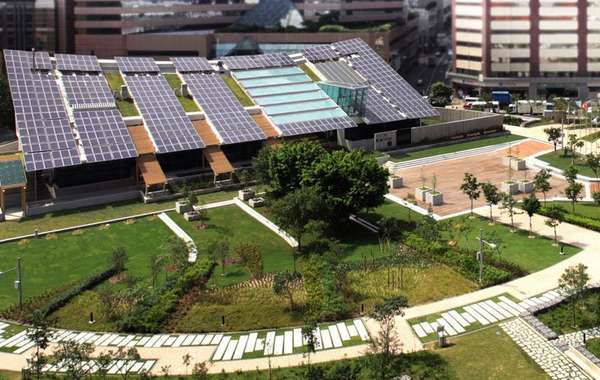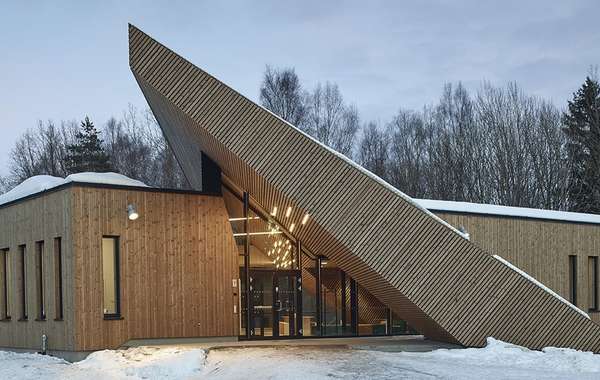Washington, D.C. & Ottawa, ON (June 9, 2015) – Green Business Certification Inc. (GBCI) and the Canada Green Building Council (CaGBC) announce a new agreement to promote and advance the WELL Building Standard (WELL) in Canada.
The WELL Building Standard is a performance-based system for measuring, certifying and monitoring features that impact human health and wellbeing, through air, water, nourishment, light, fitness, comfort and mind. It complements other green building rating systems such as LEED.
“As GBCI and CaGBC come together to advance WELL in Canada, we take an important next step in the development of better, healthier buildings across the globe,” said Mahesh Ramanujam, president of GBCI. “Just as LEED has transformed the building sector to address environmental accountability, WELL will further that vision by focusing deeply on the people in the buildings and providing developers and owners with a new way to account for health and human occupancy challenges.”
Grounded in a body of medical research that explores the connection between the buildings where we spend more than 90 percent of our time and the health and wellness of the people in them, WELL measures attributes of the built environment by looking at seven Concepts and over 100 Features that address behavior, design and operations.
“The Canada Green Building Council is excited to be working with GBCI, our long-standing partner, to bring the WELL Building Standard to Canada,” said Thomas Mueller, president and CEO of the Canada Green Building Council. “We have made a commitment to improving the environmental performance of buildings and homes, and now we also want to ensure that buildings provide a healthy and productive environment for occupants. The WELL Building Standard is a timely addition to CaGBC’s programs, as health and wellness in the workplace is increasingly recognized as an important element in attracting and retaining employees.”
WELL certification allows building owners and employers to know their space is performing as intended to support human health and wellness. WELL can be applied across all building types and is currently optimized for commercial and institutional projects. WELL is administered by the International WELL Building Institute™ (IWBI) and is third-party certified by GBCI.
The new agreement between GBCI and the CaGBC will bolster the adoption of WELL in Canada by aligning the business and administrative processes used to implement WELL in the U.S. with the demands of the Canadian market. The CaGBC has a longstanding relationship with both USGBC and GBCI, the certification body for USGBC’s LEED green building program, partnering to deliver LEED in Canada. To date, there are more than 5,300 LEED projects in Canada, amounting to more than 79 million gross square meters of space, making Canada the top producer of LEED projects outside of the U.S.
“GBCI and CaGBC joining forces will help grow the healthy building movement by bringing health and wellness into Canada’s indoor environments through the WELL Building Standard,” said IWBI Founder Paul Scialla. “With this agreement, we see tremendous opportunity for the wellness, sustainability and real estate communities in Canada to come together to support human health through the built environment.”
As GBCI aims to introduce WELL in markets spanning the globe, CaGBC will provide additional capacity and support in one of the most important and promising arenas for high-performance building development. To learn more about the WELL Building Standard, visit WELLcertified.com.
Green Business Certification Inc. (GBCI) is a third-party organization that provides independent oversight of professional credentialing and project certification programs related to green building. GBCI is committed to ensuring precision in the design, development, and implementation of measurement processes for green building performance (through project certification) and green building practice (through professional credentials and certificates). Established in 2008 to administer certifications and professional designations within the framework of the U.S. Green Building Council’s LEED® Green Building Rating Systems™, GBCI continues to develop new programs and offer the marketplace validation that building certifications and professional designations have met specific, rigorous criteria.
There are for sure a lot of green home building technologies and products out that will eat up your money rather than help you save it, but for the most part a more energy efficient, durable home will save money, and it will do so fairly quickly.
We do have this page that may be worth showing to your partner to get them on board, its about whether or not better insulated homes are worth the money.
And to address the rest of your questions, I think that's an awesome list so I’m copying and pasting to go through it point by point, and I’ll add thoughts and comments and pertinent links, though some you may have already read.
Energy efficient HVAC system – yes, get a good one, that’s worth the money. See our page here about what to look for when choosing between HRVs and ERVs
“Smart” thermostat – typically speaking, a modern green home should be so well-insulated that lowering the thermostat during the day should be somewhat pointless. Read her about smart home devices for energy efficient automated home design.
Lots of wall and ceiling and foundation and attic insulation - yes, see our page here about balancing insulation through a home for the best efficiency. Spoiler alert – heat loss goes in all directions, not just through the roof) read here to see how much insulation you need for green home construction.
Calculating the amount of glazing (not too much, not too little) – Windows facing North, East and West will always lose more heat than they gain on a daily and seasonal cycle, so be sparing with them, and see our pages on choosing the best windows for high performance homes, and remember that it’s best to have different low E coatings on the south than other sides.
Having glazing facing the right direction (e.g., south) See our page on passive solar home design, but the short story is - south facing windows can gain more heat than they lose.
Tight air-sealing of the envelope – Absolutely, make a home as well-sealed as you can and let your ventilation equipment do their job. A poor air barrier and lots of air leakage can account for 1/3 of heat loss in a home.
The best type of windows (thermal conductance, transmittance, solar gain, etc.) – another window question eh? Here is a page on window design for choosing between wood, aluminum and vinyl frames.
Eliminating thermal bridging – yes, always eliminate thermal bridging through the building envelope for energy efficiency and durability
Efficient lighting – You will probably have a lot of natural light based on your passive solar orientation, but still choose LED lights for energy savings. LEDs are very affordable now with a lot of options, see our page on LED filament bulbs
Efficient appliances – yes, it is worth the investment in more efficient appliances like ENERGY STAR Certified.
Solar panels – Whether you will save money with solar panels depends on your local utility costs as well as the cost of installing solar panels in your region. Here are the top questions to ask a solar contractor before signing a contract.
Geothermal heating/cooling – We love it as a concept and its great for larger buildings not smaller homes. Your money would be better spent on insulation, quality windows and all the stuff mentioned above. Geothermal will ‘cut your bills in half’ for maybe 25-40K, so if your heating bill is only 3 or 4 hundred bucks a year then you’d need to live longer than Yoda to make it worthwhile. Read here to see if geothermal is worth it for homes
Adding thermal mass – that depends on your lifestyle, there are ups and downs to it but personally I like it. Thermal mass in home helps balance temperatures, that can save energy but also mean a more comfortable home for occupants.






































Comments (0)
Sign Up to Comment